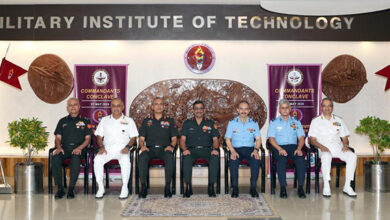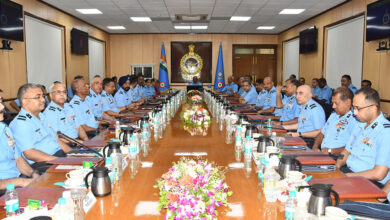India to build advanced attack helicopter
Paris. Helicopters are playing an increasingly significant role in military aviation due to their versatile capability in reaching tough terrain and being able to land and lift material without forward motion.
 India does not have the required number of helicopters, and most of whatever are available with the armed forces, are 20 years old, or more.
India does not have the required number of helicopters, and most of whatever are available with the armed forces, are 20 years old, or more.
There is a severe shortage of attack helicopters, particularly those which can operate at high altitudes.
The indigenous effort to produce them is as yet modest although the Advanced Light helicopter (ALH) developed by the Hindustan Aeronautics Limited (HAL) with equipment outsourced from Europe is showing good results.
The Indian Air Force (IAF), Army and Navy, as well as the Coast Guard, all need newer and better helicopters for a variety of utility, surveillance and attack roles. During the Kargil operations to evict the intruding Pakistani soldiers from the Indian side of the border, IAF had to tell the Army that it had no helicopters that could take on the Pakistani positions at Batalik, Dras or other heights, and finally, it was decided to deploy Mirage jets to attack the entrenched Pakistanis.
That was 1999. The position is no different now in terms of the helicopter requirement.
Nonetheless, HAL is confident that it will be able to develop an advanced Light Attack helicopter (LAH) for high altitude operations.
HAL Chairman and Managing Director Ashok Baweja told a press conference at HAL’s chalet at the Paris Air Show that work to design and build the LAH had already started and that 60 of these highly sophisticated machines would be supplied to the IAF around 2015.
Most of the current generation helicopters in the international market, including those with India, were made of sheet metal, and not designed to operate at heights of 25000 or 26000 feet. The LAH would be built with the latest available composite materials which would withstand both humidity and vibrations at the formidable heights of the Himalayas.
Powering HAL’s new helicopter, Mr. Baweja said, would be the “very powerful” Shakti engine that drives the indigenously developed Dhruv advanced light helicopter (ALH) that has already entered service with the Indian armed forces.
There would also be collaboration between the state-run and private industry to create a supply chain for various aircraft and helicopters. HAL’s Chief Marketing Manager Mihir Kanti Mishra was also present at the air show to showcase the Dhruv to potential international customers.
HAL brought three Dhruvs to Le Bourget, the venue of the air show, two for demonstration flights and one for static display. In fact, it was an Indian Dhruv which proclaimed the beginning of the daily flying display.
Mr. Baweja also said HAL had received a request for proposal (RFP) from Chile for six Dhruv helicopters, and that two would also be supplied to Bolivia. He met with the visiting Chilean Chief of Air Force, Gen Ricardo Ortega Perrier, who has already witnessed a detailed display of Dhruv in his country.
Mr. Mishra said that efforts were also on to win an order in Turkey also.
HAL had displayed the three Dhruvs earlier at the IDEF 2007 in the Turkish capital of Ankara. Chief of Turkish General Staff, Gen Yasar Buyukanit inquired about the Dhruv’s capabilities.
According to Mr. Baweja, HAL had invested $40-50 million on expanding its production facilities to help speed up deliveries of aircraft and various systems to the Indian armed forces.
Mr. Baweja’s upbeat statements come as global aerospace majors like Raytheon, Boeing, Lockheed Martin, BAE Systems, Northrop Grumman and EADS are setting up partnerships with the Indian industry to supply and manufacture vital equipment ranging from aircraft and helicopters to long-range detection and- attack systems.
Thanks to the offset advantages and the transfer of technology that would come from arrangements with foreign companies, Mr. Baweja said he expected HAL’s turnover to grow three to five times over the next few years from its current $2 billion figure.





